|
My accomplices at Planet harmonica and I were returning
from the festival in Condat/Vienne and I was thinking of first time
Benoît had me listen to Bill Barrett.
Initially, I was very surprised at Bill's somewhat Jazz-Rock style
and at the way that he had grafted on to it. With the first blasts
of the harp, I honestly thought that I was listening to a killer diatonic
player; the phrasings were so expressive, so melodic-and were technically
complex to transcribe "mentally". When Xavier and Benoît
indicated that this wasn't killer diatonic but chromatic, I immediately
told myself that I had to learn more about this hybrid of Stevie Wonder
and Little Walter.
Not long after, I was picking up all his CD's, relishing everything
he had to offer. And those 7 CD's helped me to get to know him in
his various styles as he blithely passed from the Bossa Nova (an acoustic
sound) to Rap (!) while occasionally detouring through Jazz-Rock,
Blues, Rhythm & Blues, Funk and Swing!
I really loved his unique amplified "sound". It's a very
round sound that oscillates between flowing notes, sometimes shaped
with bends (remember he plays chromatic). There are phrases that verge
on madness as they rise and fall, especially his rhythmic riff-like
runs that some may find dissonant but which I found purposeful and
well chosen! There were times when I felt I was listening to Maceo
Parker on chromatic!
When he was accompanied by a sax, the resonant balance became magical
and, immediately, you had the harmony of a good horn section-i.e.,
some real Mississippi Saxophone! Très péchu dans l'approche,
I like it better when he plays in a Jazz-rock/Funk style since his
playing is so well suited to those particular grooves.
When he's not joining in, Barrett knows how to lay back-and knows
how to be heard when he has to.
If had to criticize anything, it might be the sameness of his sound
whether acoustic or electric. Why not use effects to vary the sound
in these different musical styles?
In any case, it was a kind of revelation to me. So, if you love Stevie
Wonder, if you love Little Walter and if you're not allergic to so-called
youth music, run out and buy these CD's!!!!-DC
 Marisol Saens solo Marisol Saens solo
Vocals - Harmonica - Drums - Percussion - Guitar
- Bass
For "acoustic style playing", Bill Barrett accompanies this
pretty Brazilian voice through Bossa Nova Rhythms with a freshness
and spontaneity that will leave more than one chromatic player scratching
his head. The music sounds very jazzy, very melancholy à la
Gilberto except that Stan Getz' sax is now replaced by Bill Barrett's
harmonica. And he gives a little nod to Getz as you recognize "one
note samba" in a less brassy version. If I sometimes find there's
too much harp, the spirit is still there, still melodious … In
any case, a nice album if you're looking for an affordable ticket
to Rio.-DC
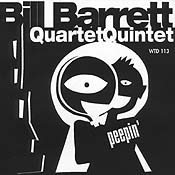 Bill Barrett Quartet/Quintet " Peepin' " Bill Barrett Quartet/Quintet " Peepin' "
Harmonica - Guitar - Organ - Drums - Saxophone
One of my favorites! A CD that brings together Funk,
Swing and, to a wider extent, Jazz-Rock, in which Mr Barrett really
excels. From the first piece, the first chorus…bang! And he's
off! A typical amplified sound out front of some wild orchestration,
the phrases climb and fall, dissonant chords are judiciously placed-unbelievable!
"Peepin'" is a real treat for the ears-not just for those
who love the prettier stuff of a piece but especially for those who
want something different from Toots' sound (though this is not to
criticize him!). Sometimes, Bill reminds me of Maceo Parker. Admittedly,
it's rather incredible to discover this way of playing the chromatic,
for the first time, but can it add anything more than the sax? -DC
 Bill Barrett Quartet/Quintet "Most Decidedly Guilty" Bill Barrett Quartet/Quintet "Most Decidedly Guilty"
Vocals - Harmonica - Saxophone - Guitar - Organ - Bass - Drums
With the very first piece, we're there: Rhythm &
Blues! Buying this CD entitles you to 52 minutes of good vibes. The
harmonica is obviously in the forefront alongside a voice that remains
reasonably good. On the program: some Little Walter covers like "Come
back baby." One more CD to recommend for aficionados of the Blues.
-DC
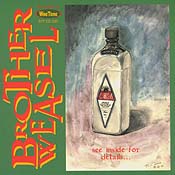 Brother Weasel Brother Weasel
Harmonica - Guitar -Drums - Saxophone -
The insert calls it Swing and Rhythm & Blues.
Whatever it is, it feels great! The orchestration is pretty close
that of the Bill Barrett Quartet, with some very tight work between
sax and guitar. Sax is played by Vince Meghrouni who also doubles
as drummer. And what a drummer! Hats off to Vince! The chorus is heavy
with sax and there's always that sound … mmm-mmm! Ya gotta hear
Herbie Hancock's Chameleon. It's hot!- DC
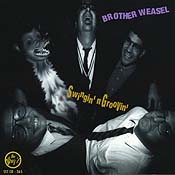 Brother Weasel "Swingin'n Groovin'" Brother Weasel "Swingin'n Groovin'"
Harmonica - Guitar -Drums - Saxophone - Hammond Organ
Another little Rhythm & Blues jewel with a couple
of lingering Funk pieces. Each track is excellently placed. The organ's
there but with a special tone that burns a little deeper into the
CD. There are sumptuous choruses that follow one another with incredible
ease. Bill's solos measure up to his immense talent.
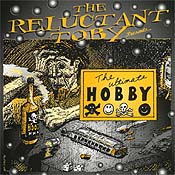 The Reluctant Toby " The Ultimate Hobby " The Reluctant Toby " The Ultimate Hobby "
Harmonica - Guitar -Drums - Saxophone - Clarinet - Flute - Hammond
Organ - Vocals
This group of musicians is overflowing with the most
incredible energy! Put together around some work on insects for the
University of California at Irvine, the compositions are stunning
for the way in which each musician interprets them. Motifs, songs
that follow a very modern polyphonic rhythmic ensemble and that pass
from electric to acoustic. Something original for the curious, special
for squares and weird for lovers of Britney Spears. -DC
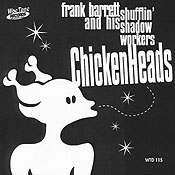 Franck Barrett & his Shufflin' Shadow Workers " Chickenheads
" Franck Barrett & his Shufflin' Shadow Workers " Chickenheads
"
Vocals - Harmonica - Saxophone - Guitar - Keyboards - Organ - Bass
- Drums
I was really surprised when I listened to this CD
for the first time; it brought together some very different styles
(Rap, Blues, Rock, Jazz-Rock and so on). And I was nicely surprised,
in any case, by the live recording of the second half of the CD! Bill
continues to marvel us as he improvises and dashes off rhythmic riffs
that leave us floored, between the rise and fall and rise and fall
of his bewildering run of scales. Strangest piece on the CD: James
Cotton's "Ain't doin' too bad ", Funk-style. Some will say
it's for the kids, others will think it should be reviewed to "get
the word out".- DC
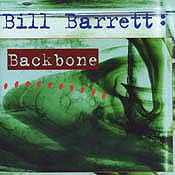 Bill Barrett Quartet: "Backbone" Bill Barrett Quartet: "Backbone"
Over the last few months, I've had the opportunity
not only to discover Bill Barrett's music, but to discover the multi-faceted
harmonica talent of this atypical player through the multiple projects
that Bill is part of.
"Backbone" is the first album of the Bill Barrett Quartet,
BBQ for short.The BBQ is Bill Barrett on Chromatic Harmonica, Wayne
Peet on Hammond organ, Ken Lasaine on Guitar and Russell Bizzett on
Drums. The bass is handled by Wayne Peet who manages not only to be
an amazing organ player but to play bass lines that quite a few bassists
would die for. Smartass ;-)
The BBQ plays a music that pays tribute to a blend of funky jazz
that has been the trade mark of Hammond organ players like Jimmy Smith
or the late Jack McDuff. It's a jazz that owes quite a bit to funk
and blues. The BBQ brings it one step further into jazz territory,
with long solos by harmonica, guitar and organ but without losing
the funky beat, the bluesy sound and the drum breaks.
Bill Barrett as a harp player and jazzman really stands out. He plays
chromatic unlike anyone I know. For a start, he plays amplified, and
believe me he has the gutsiest sound around. On the opening theme
of the first track on "Backbone", entitled "Where Green
is Blue", it's hard to believe he's playing a Chromatic, his
sound is so ballsy and bluesy. But he is. On top of the amplification,
he bends a lot, pulls these notes out like they're trying to escape
and twists them around, uses odd intervals and large, raw chords.
If it didn't sound so antagonistic, I'd definetely dub Bill the anti-Toots,because
they sound to me like they're at both ends of the Chromatic spectrum
: ballsy, mean and sometimes dissonant on one end, clean, smooth and
sometimes smoochy on the other end. It seems to me that unlike many
Chromatic players, Bill has decided to concentrate on what makes his
instrument sound mean rather than what makes it sound sweet. Many
chromatic players work hard to get the squeaks, dissonance and odd
intervals out of their playing, Bill must have decided that that's
what he loved the best and worked hard on making them sound cool.
And they do !
The BBQ is not going to appeal to everyone, and especially will be
hard to get into for people who don't like jazz, especially with soloists
who play a little "out". Bill and the others do that once
in a while, although they don't overdo it in my opinion. Bill and
his colleagues also have a real knack for writing cool themes that
are often played in unison or harmony by harp and organ or harp and
guitar.
The theme to the aforementioned "Where Green is Blue" is
so funky it got me grabbing my diatonic straight away(it turns out
to sound way cool on diatonic as well !). Titles like the swinging
"Major Bash" and the funky-latino "One cylinder"
also have exceptional themes. At the end of the day, even though the
BBQ in general and "Backbone" in particular isn't going
to be everyone's cup of tea, it might cross the style borders since
Bill's fat tone should appeal to open-eared blues fans. I would certainly
recommend it strongly to fans of Hammond Organ jazz in the vein of
Jimmy Smith and Jack MacDuff. Imagine a Jimmy Smith album with harp,
well, you've got it !
(Trad : John Galvin / BF)
http://www.billbarrett.net
|